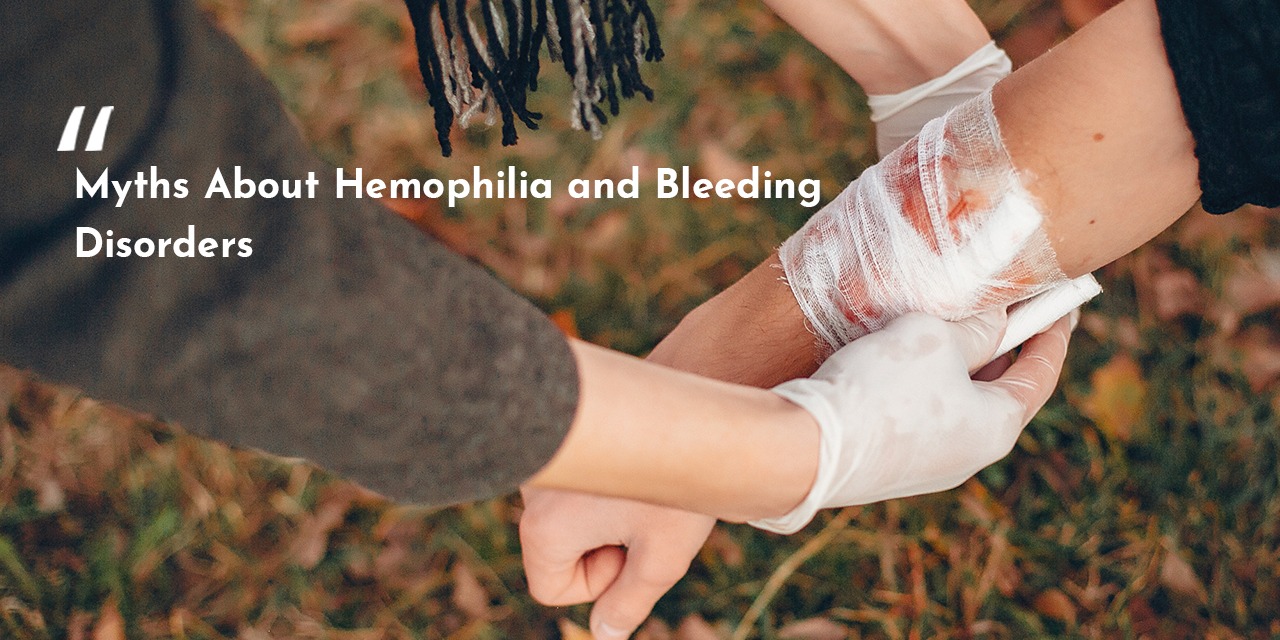Introduction
Medical conditions like Haemophilia and Bleeding disorders are not very common and our society lacks awareness about them. Even today, most of us are misled about the bleeding disorders (especially Haemophilia and Von Willebrand disease) and there is the quite widespread prevalence and sharing of some myths and invalid ideas about them. Keep reading, to learn about the truth behind some most common myths about hemophilia and bleeding disorders.
Myth 1: Haemophilia and other bleeding disorders do not affect females.
Fact: Haemophilia is an X-linked disorder, hence the majority of the sufferers are boys and men. But, some girls and women are the carriers of the genetic mutation and are also affected. Furthermore, for other bleeding disorders like Von Willebrand disease, males and females are equally affected.
Myth 2: Individuals with bleeding disorders always have their family members affected too.
Fact: Haemophilia or any other bleeding disorder often runs in families. However, there is up to 1/3 of people who may be a carrier or unaffected in the family. For some family members, the disease may be at a minor level and they may not even know they suffer from such a condition or are at risk for bleeding, particularly if they never had any cut or operation.
Myth 3: People suffering from bleeding disorders can bleed to death if they are wounded or undergo any treatment by going under the knife.
Fact: For individuals with any clotting factor deficiencies (including Haemophilia), a cut/wound or a surgery would lead to longer bleeding instead of bleeding more quickly. Routine first-aid care for patients with minor cuts/scrapes usually manages to bleed and there is no requirement for special additional medications. Moreover, people having hemophilia are allowed to use sharp objects like knives or scissors in their daily life. However, if there is any internal bleeding within the skull or hemorrhage in the soft tissue around internal organs, the hemophilia condition can pose a serious threat to the organs and might even cause tissue damage.
Myth 4: Haemophilia can be outgrown.
Fact: Haemophilia cannot be cured, however, there are some therapies to reduce its risks or severity. It is a genetic disorder that hampers the blood clotting ability and individuals having this condition have to live with it for a lifetime. Still, researchers are doing their best in bringing new ways to improve its symptoms.
Myth 5: All Haemophilia is not the same.
Fact: Haemophilia can be of two types: A and B, hence hemophilia patients may have any one of them. Both these types exhibit different symptoms and are categorized based on the deficiency of a particular kind of clotting factor. Haemophilia A is associated with low levels of clotting factor VIII while Haemophilia B patients have a deficiency of clotting factor IX and are more seriously ill.
Myth 6: Haemophilia patients cannot play sports and lead a normal life.
Fact: Those people who suffer from any bleeding disorder are usually encouraged to be active participants in sports activities like healthy individuals. Indulging in any daily physical activity is very important to build muscle strength, maintain healthy body weight, and promote joint health, hence allowing hemophilia patients to also live a longer and healthier life. The choice of the right activities or sports is best done along with the healthcare team.
If one is suffering from haemophilia and other concerns they must contact a medical professional to manage the symptoms caused by the condition to achieve a healthy and peaceful life.

